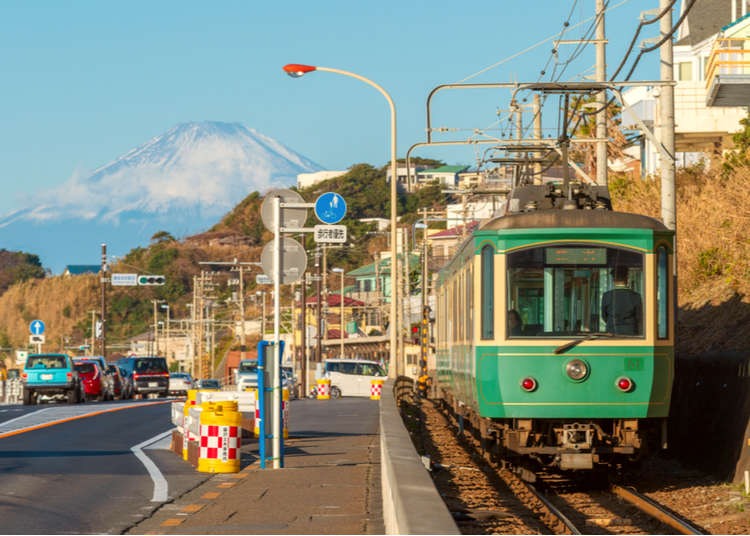
Kamakura is an ancient, scenic town south of Tokyo. It’s just a 1-hour train ride away from the Japanese capital and thus a popular and well-beloved day trip destination for Tokyoites and tourists alike. In ancient times, Kamakura was once the capital of Japan itself and much of the old, distinguished atmosphere is still strongly palpable, offering an authentic glimpse into the country’s rich history and culture.
From Kamakura Station runs a special little train called the Enoshima Electric Railway, affectionately called Enoden in short. Its scenic, about 10-kilometer long route runs through the beautiful Kamakura and Shonan area for about 10 kilometers. The adorable retro train of 2 to 4 cars take you along the beautiful coast, through historic townscapes, and along magnificent temples and shrines – indeed, the Kamakura area is so charming, it has been a set for many a movie and drama.
One of Enoden’s stops is Hase Station, close to two of Kamakura’s prime sights: the Great Buddha of Kamakura and Hase-dera Temple. The other side of the station, however, is just as interesting. Explore narrow alleys dotted with atmospheric cafés, shops, and confectionery stores, and various much smaller shrines and temples. It’s a charming, almost rural side of Japan that you probably haven’t seen before. To make the most out of this, let’s take a walk to the nearby Gokurakuji Station instead of hopping on the Enoden Line!
1) Goryo Shrine: A Tranquil Place Honoring a Brave Samurai
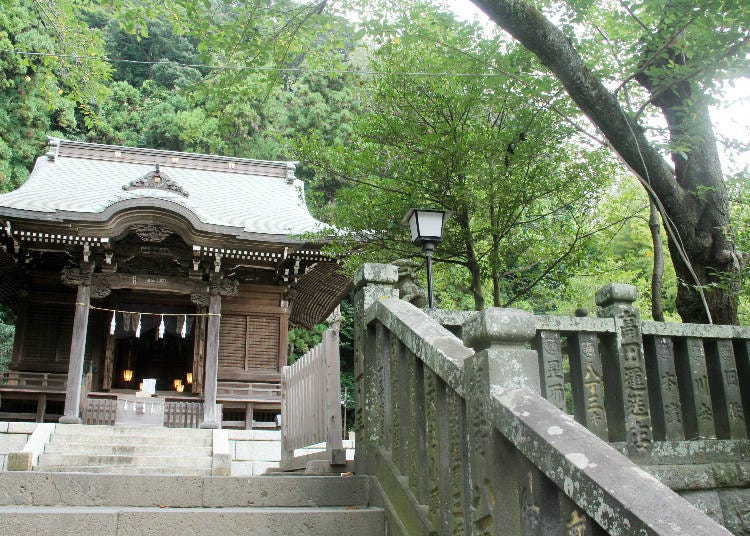
Goryo Shrine is a tranquil Shinto shrine that offers an entirely different experience than the big temples of Hase-dera and Kotoku-in. The shrine is dedicated to Kagemasa Gongoro Kamakura, a samurai of the Heian period (794 – 1185) who is known for his strength and bravery. While the Enoden train tracks run right in front of its torii, or entrance gate, you will find the place peacefully quiet and with far, far fewer people.
The shrine is valued among locals for this tranquility and the peaceful atmosphere is just right for cleansing heart and mind, rituals of utmost importance in the Shinto belief. As such, Goryo Shrine offers a very spiritual lens on Japan and its old traditions. Various sub-shrines can be found on the lush precincts, one dedicated to Fukurokuji, one of Kamakura’s Seven Deities of Good Fortune. Another highlight of the shrine is one that can’t be identified as one at first glance – it’s a mere tree stump. However, this stump was once a mighty pine tree and it is said that Kagemasa Gongoro Kamakura once leaned his bow against it. As such, it is protected and valued even today.
Calm your heart and mind and enjoy the rich, spiritual atmosphere of Goryo Shrine to the fullest!
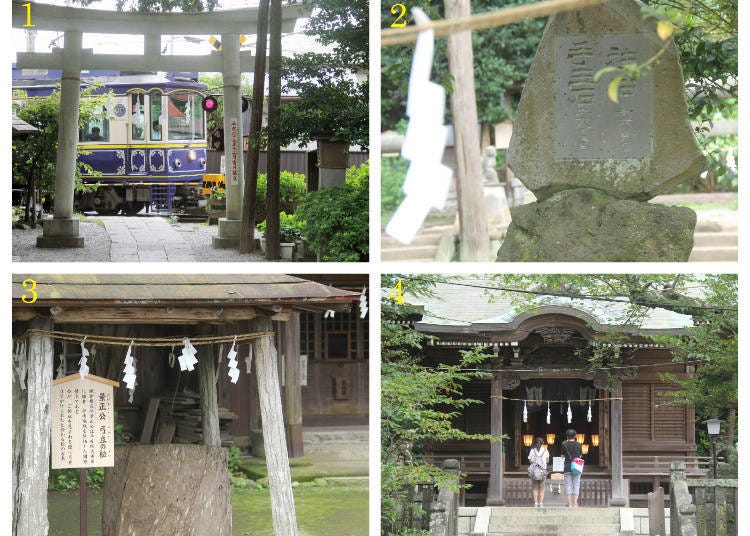
-
Goryo-jinja Shrine御霊神社
- Address 4-9 Sakanoshita, Kamakura, Kanagawa Prefecture,248-0021
Admission: worship is free
Closed: always open
Access: Hase Station (Enoden Line), 5 minutes on foot
2) Chikaramochiya: Rice Cakes so Soft and Sweet, You Won’t be Able to Stop Eating!
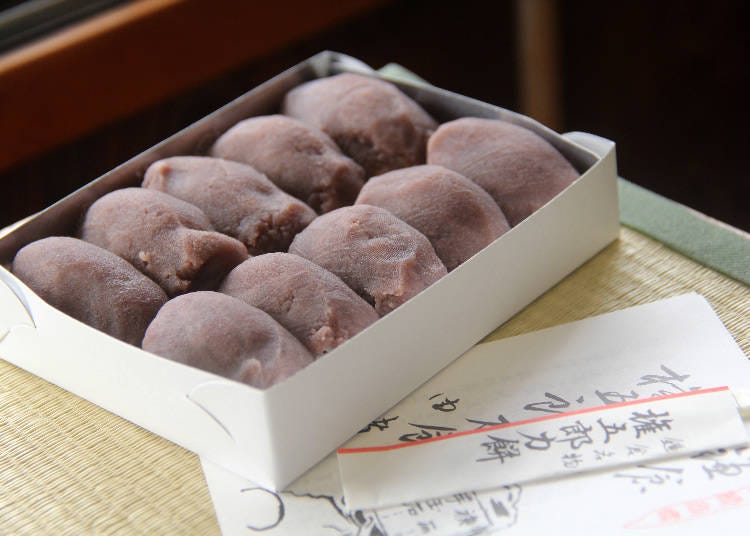
This traditional mochi (rice cake) specialty store was established in 1690, making it the oldest confectionery shop in Kamakura. Chikaramochiya’s most famous creation is the Gongoro Chikara Mochi, named after the above-named samurai of Kamakura. The freshly made mochi are wrapped in a mellow paste of sweet red beans and they taste simply heavenly. Because the shop still uses the traditional recipe it has always used, no additives can be found in the rice cakes – this also means that they have a fairly short shelf life and unfortunately can’t be used as souvenirs. Unless it’s a souvenir for yourself, of course, and you enjoy them on the very same day!
There’s one delicacy that you can safely take home: gyuhi. This Japanese confectionery is similar to Turkish delight and Chikaramochiya’s version comes with a sweet bean filling. Get a box of 9 for 930 yen! Another recommendation is Fukumen Manjuu, a castella sweet shaped like an ancient mask! One can be enjoyed for 170 yen.
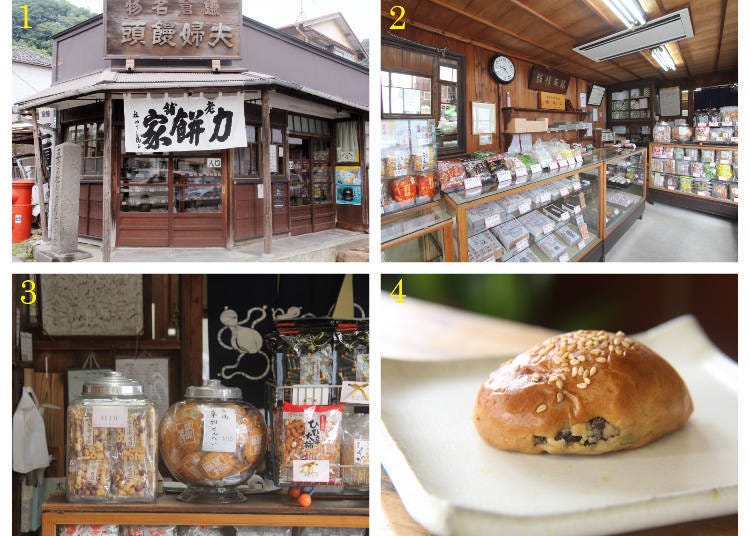
-
Chikaramochiya力餅屋
- Address 18-18 Sakanoshita, Kamakura, Kanagawa Prefecture, 248-0021
Hours: 9:00 a.m. – 6:00 p.m.
Closed: Wednesdays, every 3rd Tuesday of the month
Access: Hase Station (Enoden Line), 6 minutes on foot
3) Café Sakanoshita: Heavenly Pancakes at a Long-Established Shop
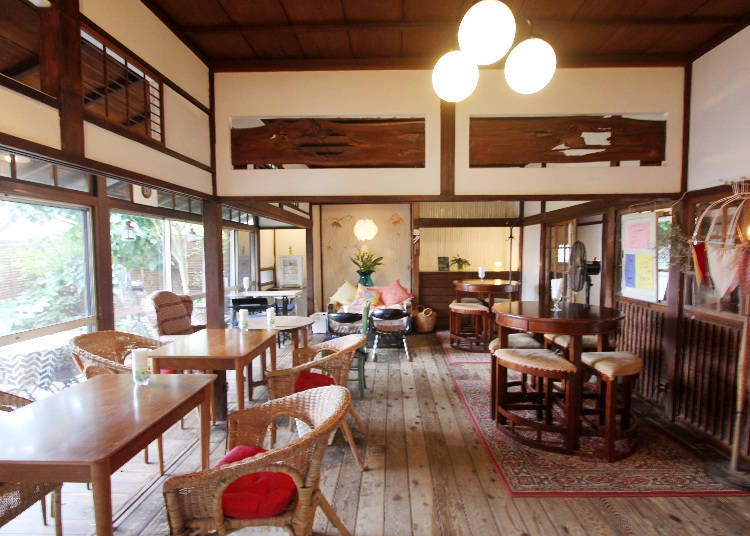
The famous Café Sakanoshita is situated in an old building so atmospheric, it has even served as a location in the popular drama “Saigo Kara Nibanme no Koi.” The must-eat at this café is the pancakes, created to reproduce the unique flavor and texture of the pancakes the owner used to eat as a child. The nostalgic pancakes are 1.5cm thick, piled up in three moist, fluffy layers that will melt on your tongue. This yummy pancake dish comes in five flavors: plain, matcha, banana caramel, berry sauce, and cheese. Every taste comes with plenty of whipped cream, except for cheese. Why not order some vanilla ice cream as topping as well?
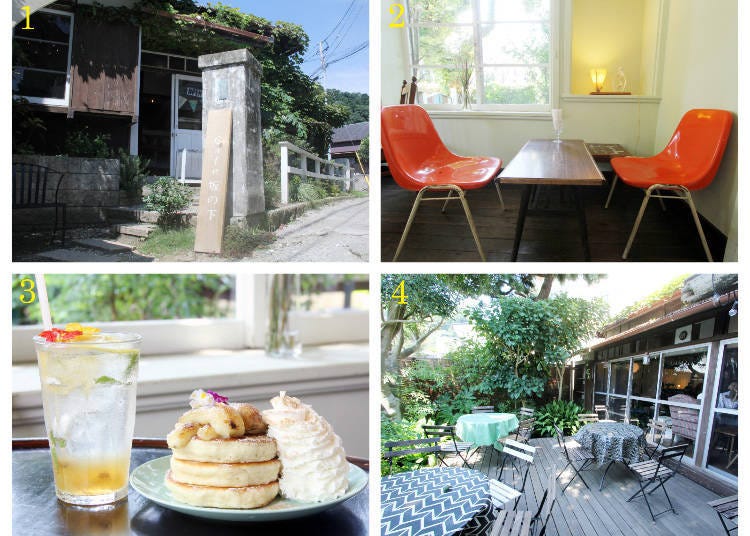
-
Café SakanoshitaCafé 坂の下
- Address 21-15 Sakanoshita, Kamakura, Kanagawa Prefecture,248-0021
Hours: 10:00 a.m. – 5:00 p.m. (last order at 4:00 p.m.)
Open until 6:00 p.m. on Saturdays and Sundays (last order at 5:00 p.m.)
Closed: Mondays, irregularly
Access: Hase Station (Enoden Line), 7 minutes on foot
4) Venus Café: Take a Break from Japanese Food and Enjoy a Proper Burger!
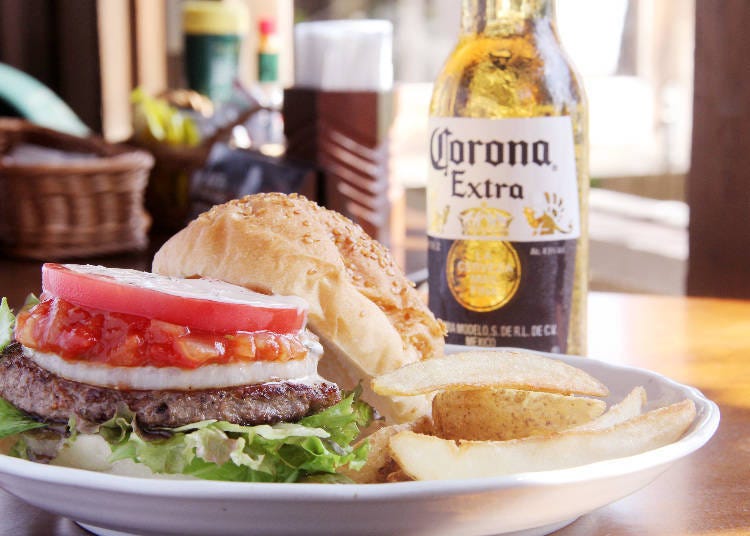
This old-school café located by the sea serves you wonderfully rustic Tex-Mex cuisine and is the perfect place to go if you need a break from Japanese food. We especially recommend the window seats that let you gaze out over Kamakura’s ocean as you sip on a cold Corona. The chef who originally studied French cuisine will tickle your taste buds with nine different kinds of burgers, such as egg or shrimp. In a set with potatoes and a drink, they cost between 1,430 and 1,530 yen. Especially tasty is the “Geisha Burger” for 1,290 yen (without set) with avocado and tartar sauce, enhanced with a pinch of wasabi. Next to burgers, choose from a variety of classic Tex-Mex dishes, including tacos, nachos, and pizza.
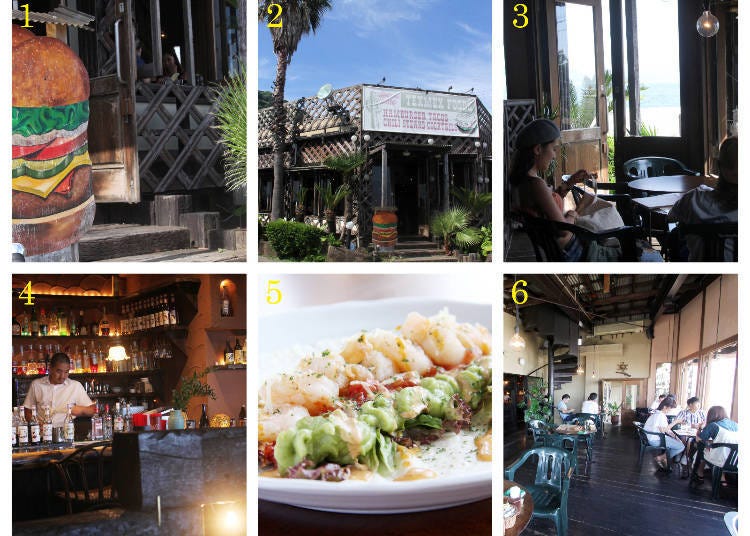
-
Venus Caféヴィーナスカフェ
- Address 34-1 Sakanoshita, Kamakura, Kanagawa Prefecture, 248-0021
Hours: 11:30 a.m. – 1:00 a.m. (last order at midnight)
Open until 2:00 a.m. on Fridays, Saturdays, and before national holidays (last order at 1:00 a.m.)
Access: Hase Station (Enoden Line), 15 minutes on foot
5) Jojuin Temple: A Secret Spot Steeped in Mysteries
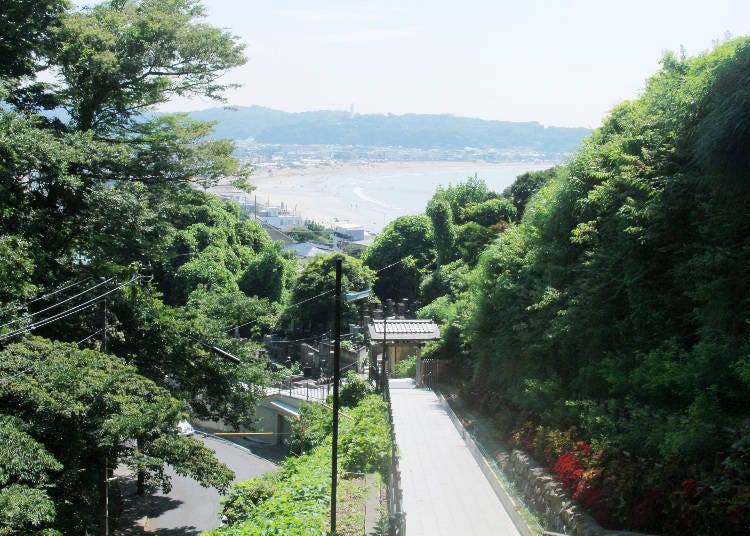
Halfway up the Gokurakuji-zaka Slope that connects Hase Station’s Sakanoshita area with Gokurakuji Station sits Jojuin Temple. You have to climb 108 steps to reach the temple of the Buddhist Shingon sect, but that climb is well worth what awaits on top.
Founded in 1219 by the third Shogun of the Kamakura Shogunate, Hojo Yasutoki, it is dedicated to the deity called Fudo Myo-o, also known as Acala. The temple is known to be a “power spot” for marriage and quite a few mysteries entwine the place and its Buddhist statues, being rumored to have greatly influenced one of Japan’s most famous sculptors, Rokuzan Ogiwara. In spring, primarily around March and April, the temple is known for its beautiful hydrangeas that blossom along the approach. The view on Yuigahama Beach is stunning in every season, so definitely stop by!
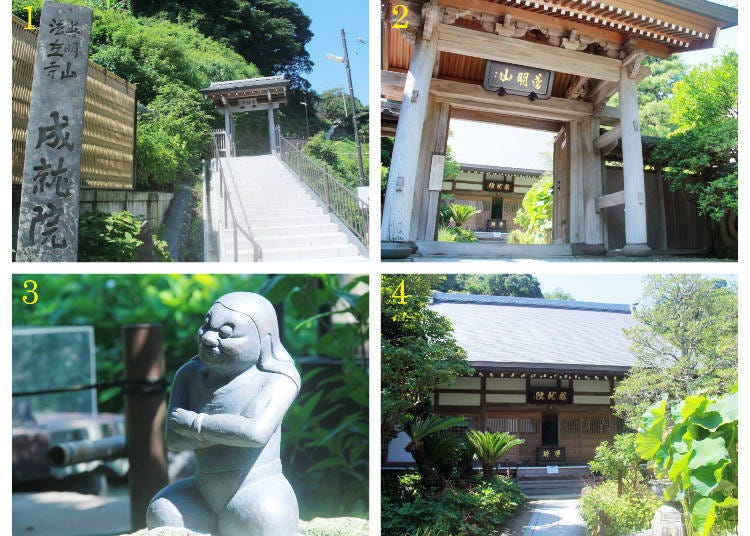
-
Jojuin Temple成就院
- Address 1-1-5 Gokurakuji, Kamakura, Kanagawa, 248-0021
Admission: none
Hours: 8:00 a.m. – 5:00 p.m.
Open until 4:30 p.m. between November 1 and March 1
Closed: always open
Access: Hase Station (Enoden Line), 3 minutes on foot
The Sightseeing Route Part 1: Hase Station → Sakanoshita Area → Beach
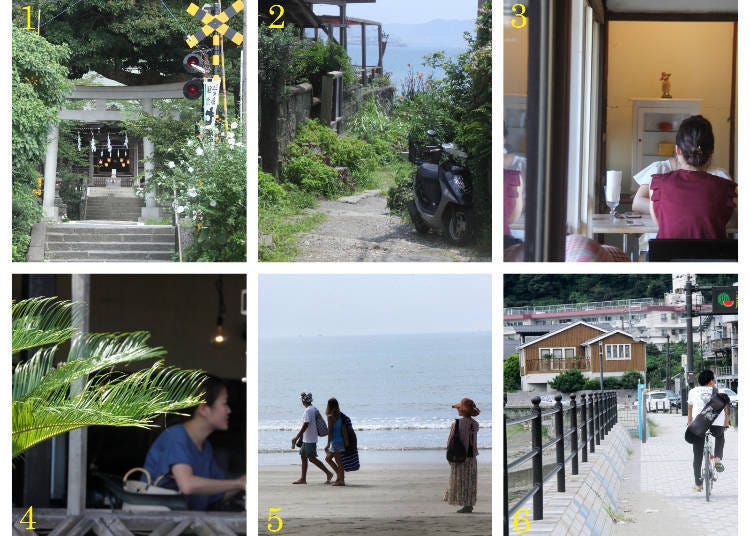
Pass Hase Station’s ticket gates and cross the railway crossing of the Enoden line. Enter a narrow street that follows the train tracks and continue straight ahead. Pass by a residential area and keep your eyes peeled for a torii gate on the right-hand side – that is Goryo Shrine. Towards the ocean is Sakanoshita, an area dotted with atmospheric little retro cafés and shops, including Chikaramochi and Café Sakanoshita. Follow Route 134 along the beach to get to Café Venus. If you have time to spare, don’t hesitate to stroll along the ocean and get your feet wet.
The Sightseeing Route Part 2: Sakanoshita Area →Jojuin Temple → Gokurakuji Station
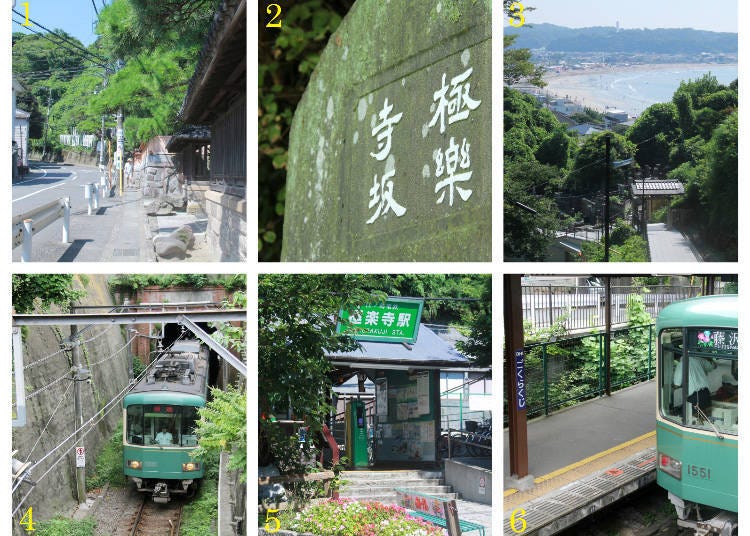
Head up the slope from Sakanoshita towards Gokurakuji Station. It’s called Gokurakuji-zaka Slope and halfway up, you’ll find Jujoin Temple and its magnificent view of Yuigahama Beach. After exploring the temple and its precincts, leave via the Yamamon gate and go down the slope to the left until you reach the road. Follow the traffic on your side and you’ll arrive at Gokurakuji Station
The trip from Hase station to Gokurakuji Station takes you along a scenic tour with mystical, tranquil shrines and temples that are completely different from the main tourist spots, to retro-style cafés and eateries to relax in and get a nostalgic taste of Japan. It’s a side of Kamakura that many tourists don’t even think about exploring, so be prepared for a quiet, local feeling and numerous little adventures and discoveries!
For a proper beach stroll, join us on Enoden Tour Part IV: Shichirigahama Station and Kamakurakokomae Station!
Main image credit: Hit1912 / Shutterstock.com
- Area
- Category
*Prices and options mentioned are subject to change.
*Unless stated otherwise, all prices include tax.
Popular Tours & Activitiess
-

Strawberries, Style, and Tokyo’s Coolest Neighborhood: Winter Afternoon Tea in Kichijoji
by: Guest Contributor
-

Japan’s Shinkansen Is About to Change Travel in an Unexpected Way
by: Guest Contributor
-

First Japan Cherry Blossom 2026 Forecast Announced! Here's When & Where to See Sakura in Japan
-
Ad

Complete Guide to Ueno's National Museum of Nature and Science, the Perfect Place to Visit on Rainy Days or With Children
-
Ad

(Opening in Jan 2026) 'THE SUMO LIVE RESTAURANT HIRAKUZA GINZA TOKYO!' 5 Exciting Ways to Experience the World of Sumo!
-
Ad

Discover the "Miraculous Forest" in the Heart of Tokyo: The Institute for Nature Study (9 Minutes from JR Meguro Station)
Inspiration for Accommodations
-

Enjoy Mt. Fuji from the Comfort of Your Room! Recommended Ryokan with Mt. Fuji View
-

Stay Near the Cherry Blossoms! Hotels for Cherry Blossom Viewing in Tokyo
-

Family-Friendly Hotels with Free Shuttle to Disneyland: Convenient Access for a Magical Stay
-

Top Ranked Hakone Hotels with Mt. Fuji View: Enjoy Stunning Scenery from Your Private Space
-

Convenient Tokyo Hotels with Airport Shuttle: Ideal for Families and Heavy Luggage
-

Stunning Tokyo Tower View Hotels: Enjoy Spectacular Scenery from Your Private Space
-

Convenient Asakusa Hotels with Kitchens: Ideal for Extended Family Visits
-

Experience Luxury: Hakone's 10 Best Five-Star Accommodations
-

Enjoy Mt. Fuji Autumn Leaves! Top Hotels Near the Popular Autumn Leaves Corridor
-

Experience Hakone Fall Foliage from Your Room with Stunning Views
-

'So Much Freedom!' Locals Recommend Tokyo's Best Neighborhoods & Hidden Gems
-

Visiting Tokyo: The Ultimate Asakusa and Odaiba 1-Day Itinerary
by: Matt Vachon
-

Osaka VS Tokyo: Which Japanese City Is Worth Visiting First?
by: Joe Turner
-

Tokyo Station Top 10 Sweets Ranking!
-

What are Tokyo's Must-See Scenic Spots? Surprising Unusual Spots Chosen by 10 Foreigners
by: Ran Tanaka
-

The Best of Japan: 11 Major Cities Every Traveler Should Visit
- #best ramen tokyo
- #what to buy in ameyoko
- #what to bring to japan
- #new years in tokyo
- #best izakaya shinjuku
- #things to do tokyo
- #japanese nail trends
- #what to do in odaiba
- #onsen tattoo friendly tokyo
- #daiso
- #best sushi ginza
- #japanese convenience store snacks
- #best yakiniku shibuya
- #japanese fashion culture
- #best japanese soft drinks


















